Examining the Drivers to Support Improved Construction and Demolition Waste Management for a Circular Economy: A Comprehensive Review Using a Systematic Approach
Abstract
:1. Introduction
2. Materials and Methods
3. Results and Discussion
3.1. PESTLE Drivers Classification
3.1.1. Political/Legal Drivers
3.1.2. Economical Drivers
3.1.3. Social Drivers
3.1.4. Technological Drivers
3.1.5. Environmental Drivers
3.2. Drivers Analysis by Geographic Region
3.3. Drivers Analysis by Timeframe
4. Conclusions
- D1—adequate formulation and application of government CDW regulations and policies
- D2—training and education about CDW management aspects (causes, types, LWTs, cost savings, environmental impact)
- D3—provision of innovative low-waste technologies (LWTs)
- D4—adequate formulation and application of CDW protocols, programmes, and strategies
- D5—commitment of client and contractor by allocating time and money for CDW management
Author Contributions
Funding
Acknowledgments
Conflicts of Interest
References
- ISWA. 2015 ISWA Annual Report. 2015. Available online: https://www.iswa.org/annual-reports (accessed on 28 July 2023).
- DEFRA. UK Statistics on Waste. Available online: https://www.gov.uk/government/statistics/uk-waste-data/uk-statistics-on-waste (accessed on 28 July 2023).
- Deloitte. Study on Resource Efficient Use of Mixed Wastes Improving Management of Construction and Demolition Waste—Final Report. 2017. Available online: https://ec.europa.eu/environment/pdf/waste/studies/CDW_Final_Report.pdf (accessed on 29 July 2023).
- Chang, Y.; Li, X.; Masanet, E.; Zhang, L.; Huang, Z.; Ries, R. Unlocking the green opportunity for prefabricated buildings and construction in China. Resour. Conserv. Recycl. 2018, 139, 259–261. [Google Scholar] [CrossRef]
- EPA. Advancing Sustainable Materials Management: 2017 Fact Sheet. 2017. Available online: https://www.epa.gov/sites/default/files/2019-11/documents/2017_facts_and_figures_fact_sheet_final.pdf (accessed on 29 July 2023).
- Ouda, O.K.M.; Peterson, H.P.; Rehan, M.; Sadef, Y.; Alghazo, J.M.; Nizami, A.S. A Case Study of Sustainable Construction Waste Management in Saudi Arabia. Waste Biomass Valorization 2018, 9, 2541–2555. [Google Scholar] [CrossRef]
- Akenji, L.; Bengtsson, M.; Emily Briggs Chiu, A.; Daconto, G.; Fadeeva, Z. Sustainable Consumption and Production: A HANDBOOK for Policymakers; Briggs, E., Ed.; Global Edition; UNEP: Nairobi, Kenya, 2015; 212p. [Google Scholar]
- IEA; UNEP. 2019 Global Status Report for Buildings and Construction: Towards a Zero-Emissions, Efficient and Resilient Buildings and Construction Sector; International Energy Agency: Hamburg, Germany, 2019; Available online: https://www.unep.org/resources/publication/2019-global-status-report-buildings-and-construction-sector (accessed on 29 July 2023).
- UNEP; IRP. Global Resources Outlook 2019 Natural Resources for the Future We Want. 2019. Available online: https://wedocs.unep.org/handle/20.500.11822/27517 (accessed on 29 July 2023).
- UNEP. Sand and Sustainability: Finding New Solutions for Environmental Governance of Global Sand Resources. 2019. Available online: https://wedocs.unep.org/handle/20.500.11822/28163 (accessed on 29 July 2023).
- Ferronato, N.; Torretta, V.; Ragazzi, M.; Rada, E.C. Waste Mismanagement in Developing Countries: A Case Study of Environmental Contamination. UPB Sci. Bull. Ser. D 2017, 79, 185–196. [Google Scholar]
- World Bank. What a Waste 2.0: A Global Snapshot of Solid Waste Management to 2050. 2018. Available online: https://openknowledge.worldbank.org/bitstream/handle/10986/30317/9781464813290.pdf?sequence=12&isAllowed=y (accessed on 29 July 2023).
- WRAP. Achieving Good Practice Waste Minimisation and Management Guidance for Construction Clients, Design Teams and Contractors. Available online: https://www.eauc.org.uk/file_uploads/wrap2.pdf (accessed on 29 July 2023).
- Mahpour, A.; Mortaheb, M.M. Financial-Based Incentive Plan to Reduce Construction Waste. J. Constr. Eng. Manag. 2018, 144, 4018029. [Google Scholar] [CrossRef]
- Hao, J.; Yuan, H.; Liu, J.; Chin, C.S.; Lu, W. A model for assessing the economic performance of construction waste reduction. J. Clean. Prod. 2019, 232, 427–440. [Google Scholar] [CrossRef]
- Osmani, M. Construction Waste. In Waste; Academic Press: Cambridge, MA, USA, 2011; pp. 207–218. [Google Scholar]
- World Economic Forum. What Is the Circular Economy and Why Does It Matter That It Is Shrinking? 14 June 2022. Available online: https://www.weforum.org/agenda/2022/06/what-is-the-circular-economy/ (accessed on 7 July 2023).
- Alhawamdeh, M.; Lee, A. Construction Waste Minimisation: A Narrative Review. Int. J. Environ. Sustain. 2021, 18, 1. [Google Scholar] [CrossRef]
- Huang, B.; Wang, X.; Kua, H.; Geng, Y.; Bleischwitz, R.; Ren, J. Construction and demolition waste management in China through the 3R principle. Resour. Conserv. Recycl. 2018, 129, 36–44. [Google Scholar] [CrossRef]
- Zhang, X.; Wu, Y.; Shen, L. Application of low waste technologies for design and construction: A case study in Hong Kong. Renew. Sustain. Energy Rev. 2012, 16, 2973–2979. [Google Scholar] [CrossRef]
- Ferriz-Papi, J.A.; Lee, A.; Alhawamdeh, M. Examining the Challenges for Circular Economy Implementation in Construction and Demolition Waste Management: A Comprehensive Review Using Systematic Methods. Buildings 2024, 14, 1237. [Google Scholar] [CrossRef]
- Levy, Y.; Ellis, T.J. Informing Science Journal A Systems Approach to Conduct an Effective Literature Review in Support of Information Systems Research. Inf. Sci. J. 2006, 9, 181–212. [Google Scholar]
- Peters, M.D.; Godfrey, C.M.; Khalil, H.; McInerney, P.; Parker, D.; Soares, C.B. Guidance for conducting systematic scoping reviews. JBI Evid. Implement. 2015, 13, 141–146. [Google Scholar] [CrossRef] [PubMed]
- Singh, V.K.; Singh, P.; Karmakar, M.; Leta, J.; Mayr, P. The journal coverage of Web of Science, Scopus and Dimensions: A comparative analysis. Scientometrics 2021, 126, 5113–5142. [Google Scholar] [CrossRef]
- European Commission. Circular Economy Action Plan. Available online: https://environment.ec.europa.eu/strategy/circular-economy-action-plan_en (accessed on 30 July 2023).
- United Nations Environment Programme, International Solid Waste Association. Global Waste Management Outlook 2024—Beyond an age of waste: Turning Rubbish into a Resource; United Nations Environment Programme: Nairobi, Kenya, 2024; Available online: https://wedocs.unep.org/20.500.11822/44939 (accessed on 13 May 2024).
- UN Climate Change. The Paris Agreement Related News Related Documents Related Links What is the Paris Agreement? Available online: https://unfccc.int/process-and-meetings/the-paris-agreement (accessed on 30 July 2023).
- European Commission. European Waste Framework Directive. 2019. Available online: https://eur-lex.europa.eu/legal-content/EN/TXT/HTML/?uri=CELEX:32019D1004&qid=1690732569938 (accessed on 30 July 2023).
- Guerra, B.C.; Shahi, S.; Mollaei, A.; Skaf, N.; Weber, O.; Leite, F.; Haas, C. Circular economy applications in the construction industry: A global scan of trends and opportunities. J. Clean. Prod. 2021, 324, 129125. [Google Scholar] [CrossRef]
- Guerra, B.C.; Bakchan, A.; Leite, F.; Faust, K.M. BIM-based automated construction waste estimation algorithms: The case of concrete and drywall waste streams. Waste Manag. 2019, 87, 825–832. [Google Scholar] [CrossRef] [PubMed]
- Abarca-Guerrero, L.; Leandro-Hernandez, A.G. Material management practices for construction waste reduction. WIT Trans. Ecol. Environ. 2017, 223, 551–557. [Google Scholar]
- Guerra, B.C.; Leite, F. Circular economy in the construction industry: An overview of United States stakeholders’ awareness, major challenges, and enablers. Resour. Conserv. Recycl. 2021, 170, 105617. [Google Scholar] [CrossRef]
- EPA. Sustainable Management of Construction and Demolition Materials; US EPA: Washington, DC, USA, 2023. Available online: https://www.epa.gov/smm/sustainable-management-construction-and-demolition-materials (accessed on 7 July 2023).
- Aguilar, F.J. Scanning the Business Environment. Available online: https://lccn.loc.gov/67011688 (accessed on 13 May 2024).
- Cristiano, S.; Ghisellini, P.; D’Ambrosio, G.; Xue, J.; Nesticò, A.; Gonella, F.; Ulgiati, S. Construction and demolition waste in the Metropolitan City of Naples, Italy: State of the art, circular design, and sustainable planning opportunities. J. Clean. Prod. 2021, 293, 125856. [Google Scholar] [CrossRef]
- Oke, A.; Aigbavboa, C.; Aghimien, D.; Currie, N. Construction Professionals Perception of Solid Waste Management in the South African Construction Industry. In Advances in Human Factors, Sustainable Urban Planning and Infrastructure; Charytonowicz, J., Falcão, C., Eds.; Springer: Berlin/Heidelberg, Germany, 2019; pp. 496–505. [Google Scholar]
- Yuan, H. Barriers and countermeasures for managing construction and demolition waste: A case of Shenzhen in China. J. Clean. Prod. 2017, 157, 84–93. [Google Scholar] [CrossRef]
- Ghaffar, S.H.; Burman, M.; Braimah, N. Pathways to circular construction: An integrated management of construction and demolition waste for resource recovery. J. Clean. Prod. 2020, 244, 118710. [Google Scholar] [CrossRef]
- Shooshtarian, S.; Hosseini, M.R.; Kocaturk, T.; Arnel, T.; Garofano, N.T. Circular economy in the Australian AEC industry: Investigation of barriers and enablers. Build. Res. Inf. 2023, 51, 56–68. [Google Scholar] [CrossRef]
- Torres-Guevara, L.E.; Prieto-Sandoval, V.; Mejia-Villa, A. Success Drivers for Implementing Circular Economy: A Case Study from the Building Sector in Colombia. Sustainability 2021, 13, 1350. [Google Scholar] [CrossRef]
- Van Tuan, N.; Kien, T.T.; Huyen, D.T.T.; Nga, T.T.V.; Giang, N.H.; Dung, N.T.; Isobe, Y.; Ishigaki, T.; Kawamoto, K. Current status of construction and demolition waste management in Vietnam: Challenges and opportunities. Int. J. GEOMATE 2018, 15, 23–29. [Google Scholar] [CrossRef]
- Shooshtarian, S.; Caldera, S.; Maqsood, T.; Ryley, T.; Khalfan, M. An investigation into challenges and opportunities in the Australian construction and demolition waste management system. Eng. Constr. Archit. Manag. 2022, 29, 4313–4330. [Google Scholar] [CrossRef]
- Khan, A.R.; Ditta, A.; Mehmood, M.S.; MaoSheng, Z.; Natalia, M. Determinants and implications of environmental practices for waste management and the minimization in the construction industry: A case study of Pakistan. Environ. Sci. Pollut. Res. 2021, 28, 58221–58231. [Google Scholar] [CrossRef] [PubMed]
- Blaisi, N.I. Construction and demolition waste management in Saudi Arabia: Current practice and roadmap for sustainable management. J. Clean. Prod. 2019, 221, 167–175. [Google Scholar] [CrossRef]
- Saez, P.V.; Merino, M.d.R.; González, A.S.-A.; Porras-Amores, C. Best practice measures assessment for construction and demolition waste management in building constructions. Resour. Conserv. Recycl. 2013, 75, 52–62. [Google Scholar] [CrossRef]
- Crawford, R.H.; Mathur, D.; Gerritsen, R. Barriers to Improving the Environmental Performance of Construction Waste Management in Remote Communities. Procedia Eng. 2017, 196, 830–837. [Google Scholar] [CrossRef]
- Giorgi, S.; Lavagna, M.; Wang, K.; Osmani, M.; Liu, G.; Campioli, A. Drivers and barriers towards circular economy in the building sector: Stakeholder interviews and analysis of five European countries policies and practices. J. Clean. Prod. 2022, 336, 130395. [Google Scholar] [CrossRef]
- Wu, H.; Duan, H.; Wang, J.; Wang, T.; Wang, X. Quantification of carbon emission of construction waste by using streamlined LCA: A case study of Shenzhen, China. J. Mater. Cycles Waste Manag. 2015, 17, 637–645. [Google Scholar] [CrossRef]
- Li, J.; Tam, V.W.Y.; Zuo, J.; Zhu, J. Designers’ attitude and behaviour towards construction waste minimization by design: A study in Shenzhen, China. Resour. Conserv. Recycl. 2015, 105, 29–35. [Google Scholar] [CrossRef]
- Ajayi, S.O.; Oyedele, L.O. Policy imperatives for diverting construction waste from landfill: Experts’ recommendations for UK policy expansion. J. Clean. Prod. 2017, 147, 57–65. [Google Scholar] [CrossRef]
- Pellegrini, L.; Campi, S.; Locatelli, M.; Pattini, G.; Di Giuda, G.M.; Tagliabue, L.C. Digital Transition and Waste Management in Architecture, Engineering, Construction, and Operations Industry. Front. Energy Res. 2020, 8, 576462. [Google Scholar] [CrossRef]
- Adams, K.T.; Osmani, M.; Thorpe, T.; Thornback, J. Circular economy in construction: Current awareness, challenges and enablers. Proc. Inst. Civil. Eng. Waste Resour. Manag. 2017, 170, 15–24. [Google Scholar] [CrossRef]
- Gangolells, M.; Casals, M.; Forcada, N.; Macarulla, M. Analysis of the implementation of effective waste management practices in construction projects and sites. Resour. Conserv. Recycl. 2014, 93, 99–111. [Google Scholar] [CrossRef]
- Alhawamdeh, M.; Lee, A. A behavioral framework for construction waste minimization: The case of Jordan. Int. J. Environ. Sustain. 2021, 17, 9–32. [Google Scholar] [CrossRef]
- Tirado, R.; Aublet, A.; Laurenceau, S.; Habert, G. Challenges and Opportunities for Circular Economy Promotion in the Building Sector. Sustainability 2022, 14, 1569. [Google Scholar] [CrossRef]
- Christensen, T.B.; Johansen, M.R.; Buchard, M.V.; Glarborg, C.N. Closing the material loops for construction and demolition waste: The circular economy on the island Bornholm, Denmark. Resour. Conserv. Recycl. Adv. 2022, 15, 200104. [Google Scholar] [CrossRef]
- Luscuere, L.M. Materials Passports: Optimising value recovery from materials. Proc. Inst. Civil. Eng. Waste Resour. Manag. 2017, 170, 25–28. [Google Scholar] [CrossRef]
- Won, J.; Cheng, J.C.P.; Lee, G. Quantification of construction waste prevented by BIM-based design validation: Case studies in South Korea. Waste Manag. 2016, 49, 170–180. [Google Scholar] [CrossRef]
- Wang, G.; Krzywda, D.; Kondrashev, S.; Vorona-Slivinskaya, L. Recycling and Upcycling in the Practice of Waste Management of Construction Giants. Sustainability 2021, 13, 640. [Google Scholar] [CrossRef]
- zu Castell-Rüdenhausen, M.; Wahlström, M.; Astrup, T.F.; Jensen, C.; Oberender, A.; Johansson, P.; Waerner, E.R. Policies as Drivers for Circular Economy in the Construction Sector in the Nordics. Sustainability 2021, 13, 9350. [Google Scholar] [CrossRef]
- Tam, V.W.Y.; Lu, W. Construction Waste Management Profiles, Practices, and Performance: A Cross-Jurisdictional Analysis in Four Countries. Sustainability 2016, 8, 190. [Google Scholar] [CrossRef]
- Noor, R.N.H.R.M.; Ridzuan, A.R.M.; Endut, I.R.; Noordin, B.; Shehu, Z.; Ghani, A.H.A. The quantification of local construction waste for the current construction waste management practices: A case study in Klang Valley. In Proceedings of the 2013 IEEE Business Engineering and Industrial Applications Colloquium (BEIAC), Langkawi, Malaysia, 7–9 April 2013; pp. 183–188. [Google Scholar]
- Bao, Z.; Lu, W. Developing efficient circularity for construction and demolition waste management in fast emerging economies: Lessons learned from Shenzhen, China. Sci. Total Environ. 2020, 724, 138264. [Google Scholar] [CrossRef] [PubMed]
- Condotta, M.; Zatta, E. Reuse of building elements in the architectural practice and the European regulatory context: Inconsistencies and possible improvements. J. Clean. Prod. 2021, 318, 128413. [Google Scholar] [CrossRef]
- Torgautov, B.; Zhanabayev, A.; Tleuken, A.; Turkyilmaz, A.; Mustafa, M.; Karaca, F. Circular Economy: Challenges and Opportunities in the Construction Sector of Kazakhstan. Buildings 2021, 11, 501. [Google Scholar] [CrossRef]
- Ajayi, S.O.; Oyedele, L.O.; Bilal, M.; Akinade, O.O.; Alaka, H.A.; Owolabi, H.A.; Kadiri, K.O. Waste effectiveness of the construction industry: Understanding the impediments and requisites for improvements. Resour. Conserv. Recycl. 2015, 102, 101–112. [Google Scholar] [CrossRef]
- Ramos, M.; Martinho, G. Influence of construction company size on the determining factors for construction and demolition waste management. Waste Manag. 2021, 136, 295–302. [Google Scholar] [CrossRef] [PubMed]
- AAjayi, S.O.; Oyedele, L.O.; Akinade, O.O.; Bilal, M.; Owolabi, H.A.; Alaka, H.A.; Kadiri, K.O. Reducing waste to landfill: A need for cultural change in the UK construction industry. J. Build. Eng. 2016, 5, 185–193. [Google Scholar] [CrossRef]
- Shojaei, A.; Ketabi, R.; Razkenari, M.; Hakim, H.; Wang, J. Enabling a circular economy in the built environment sector through blockchain technology. J. Clean. Prod. 2021, 294, 126352. [Google Scholar] [CrossRef]
- Saez, P.V.; de Guzman Baez, A.; Navarro, J.G.; del Rio Merino, M. Redefining construction and demolition waste management systems: Best practices on civil engineering works. Balt. J. Road Bridge Eng. 2014, 9, 171. [Google Scholar] [CrossRef]
- Lu, W.; Webster, C.; Peng, Y.; Chen, X.; Chen, K. Big data in construction waste management: Prospects and challenges. Detritus 2018, 4, 129–139. [Google Scholar] [CrossRef]
- Oluleye, B.I.; Chan, D.W.M.; Saka, A.B.; Olawumi, T.O. Circular economy research on building construction and demolition waste: A review of current trends and future research directions. J. Clean. Prod. 2022, 357, 131927. [Google Scholar] [CrossRef]
- Low, J.K.; Wallis, S.L.; Hernandez, G.; Cerqueira, I.S.; Steinhorn, G.; Berry, T.A. Encouraging Circular Waste Economies for the New Zealand Construction Industry: Opportunities and Barriers. Front. Sustain. Cities 2020, 2, 35. [Google Scholar] [CrossRef]
- Umar, U.A.; Shafiq, N.; Ahmad, F.A. A case study on the effective implementation of the reuse and recycling of construction & demolition waste management practices in Malaysia. Ain Shams Eng. J. 2021, 12, 283–291. [Google Scholar]
- Ajayi, S.O.; Oyedele, L.O.; Bilal, M.; Akinade, O.O.; Alaka, H.A.; Owolabi, H.A. Critical management practices influencing on-site waste minimization in construction projects. Waste Manag. 2017, 59, 330–339. [Google Scholar] [CrossRef] [PubMed]
- Tafesse, S.; Girma, Y.E.; Dessalegn, E. Analysis of the socio-economic and environmental impacts of construction waste and management practices. Heliyon 2022, 8, e09169. [Google Scholar] [CrossRef] [PubMed]
- Wuni, I.Y.; Shen, G.Q. Developing critical success factors for integrating circular economy into modular construction projects in Hong Kong. Sustain. Prod. Consum. 2022, 29, 574–587. [Google Scholar] [CrossRef]
- Kabirifar, K.; Mojtahedi, M.; Changxin Wang, C.; Tam, V.W.Y. Effective construction and demolition waste management assessment through waste management hierarchy; a case of Australian large construction companies. J. Clean. Prod. 2021, 312, 127790. [Google Scholar] [CrossRef]
- Akinade, O.O.; Oyedele, L.O. Integrating construction supply chains within a circular economy: An ANFIS-based waste analytics system (A-WAS). J. Clean. Prod. 2019, 229, 863–873. [Google Scholar] [CrossRef]
- Cheng, J.C.P.; Ma, L.Y.H. A BIM-based system for demolition and renovation waste estimation and planning. Waste Manag. 2013, 33, 1539–1551. [Google Scholar] [CrossRef]
- Bernardo, M.; Gomes, M.C.; de Brito, J. Demolition waste generation for development of a regional management chain model. Waste Manag. 2016, 49, 156–169. [Google Scholar] [CrossRef] [PubMed]
- Ding, Z.; Yi, G.; Tam, V.W.Y.; Huang, T. A system dynamics-based environmental performance simulation of construction waste reduction management in China. Waste Manag. 2016, 51, 130–141. [Google Scholar] [CrossRef] [PubMed]
- Rahmat, A.S.; Noor, H.R.N.R.M.; Endut, I.R.; Ridzuan, R.A.M. The practice of construction waste management in Pulau Pinang. AIP Conf. Proc. 2016, 1774, 030018. [Google Scholar]
- Gálvez-Martos, J.L.; Styles, D.; Schoenberger, H.; Zeschmar-Lahl, B. Construction and demolition waste best management practice in Europe. Resour. Conserv. Recycl. 2018, 136, 166–178. [Google Scholar] [CrossRef]
- Serpell, A.; Kort, J.; Vera, S. Awareness, actions, drivers and barriers of sustainable construction in Chile. Technol. Econ. Dev. Econ. 2013, 19, 272–288. [Google Scholar] [CrossRef]
- Davies, J.; Foxall, G.R.; Pallister, J. Beyond the Intention–Behaviour Mythology: An Integrated Model of Recycling. Mark. Theory 2002, 2, 29–113. [Google Scholar] [CrossRef]
- Nikakhtar, A.; Hosseini, A.A.; Wong, K.Y.; Zavichi, A. Application of lean construction principles to reduce construction process waste using computer simulation: A case study. Int. J. Serv. Oper. Manag. 2015, 20, 461–480. [Google Scholar] [CrossRef]
- María, M.R.; Nicolás, M.; Amparo, V.M. The Role of Information Technologies to Address Data Handling in Construction Project Management. J. Comput. Civil Eng. 2016, 30, 04015064. [Google Scholar]
- Liu, Z.; Osmani, M.; Demian, P.; Baldwin, A. A BIM-aided construction waste minimisation framework. Autom. Constr. 2015, 59, 1–23. [Google Scholar] [CrossRef]
- Won, J.; Cheng, J.C.P. Identifying potential opportunities of building information modeling for construction and demolition waste management and minimization. Autom. Constr. 2017, 79, 3–18. [Google Scholar] [CrossRef]
- Martin, L.; Perry, F. Chapter 11—Sustainable Construction Technology Adoption. In Sustainable Construction Technologies; Tam, V.W.Y., Le, K.N., Eds.; Butterworth-Heinemann: Waltham, MA, USA, 2019; pp. 299–316. Available online: https://www.sciencedirect.com/science/article/pii/B9780128117491000092 (accessed on 13 May 2024).
- Pan, M.; Linner, T.; Pan, W.; Cheng, H.; Bock, T. A framework of indicators for assessing construction automation and robotics in the sustainability context. J. Clean. Prod. 2018, 182, 82–95. [Google Scholar] [CrossRef]
- Tam, V.W.Y.; Fung, I.W.H.; Sing, M.C.P.; Ogunlana, S.O. Best practice of prefabrication implementation in the Hong Kong public and private sectors. J. Clean. Prod. 2015, 109, 216–231. [Google Scholar] [CrossRef]
- Mesároš, P.; Mandičák, T. Factors affecting the use of modern methods and materials in construction. IOP Conf. Ser. Mater. Sci. Eng. 2015, 71, 012053. [Google Scholar] [CrossRef]
- Wang, J.; Wu, H.; Tam, V.W.Y.; Zuo, J. Considering life-cycle environmental impacts and society’s willingness for optimizing construction and demolition waste management fee: An empirical study of China. J. Clean. Prod. 2019, 206, 1004–1014. [Google Scholar] [CrossRef]
- Wang, T.; Wang, J.; Wu, P.; Wang, J.; He, Q.; Wang, X. Estimating the environmental costs and benefits of demolition waste using life cycle assessment and willingness-to-pay: A case study in Shenzhen. J. Clean. Prod. 2018, 172, 14–26. [Google Scholar] [CrossRef]
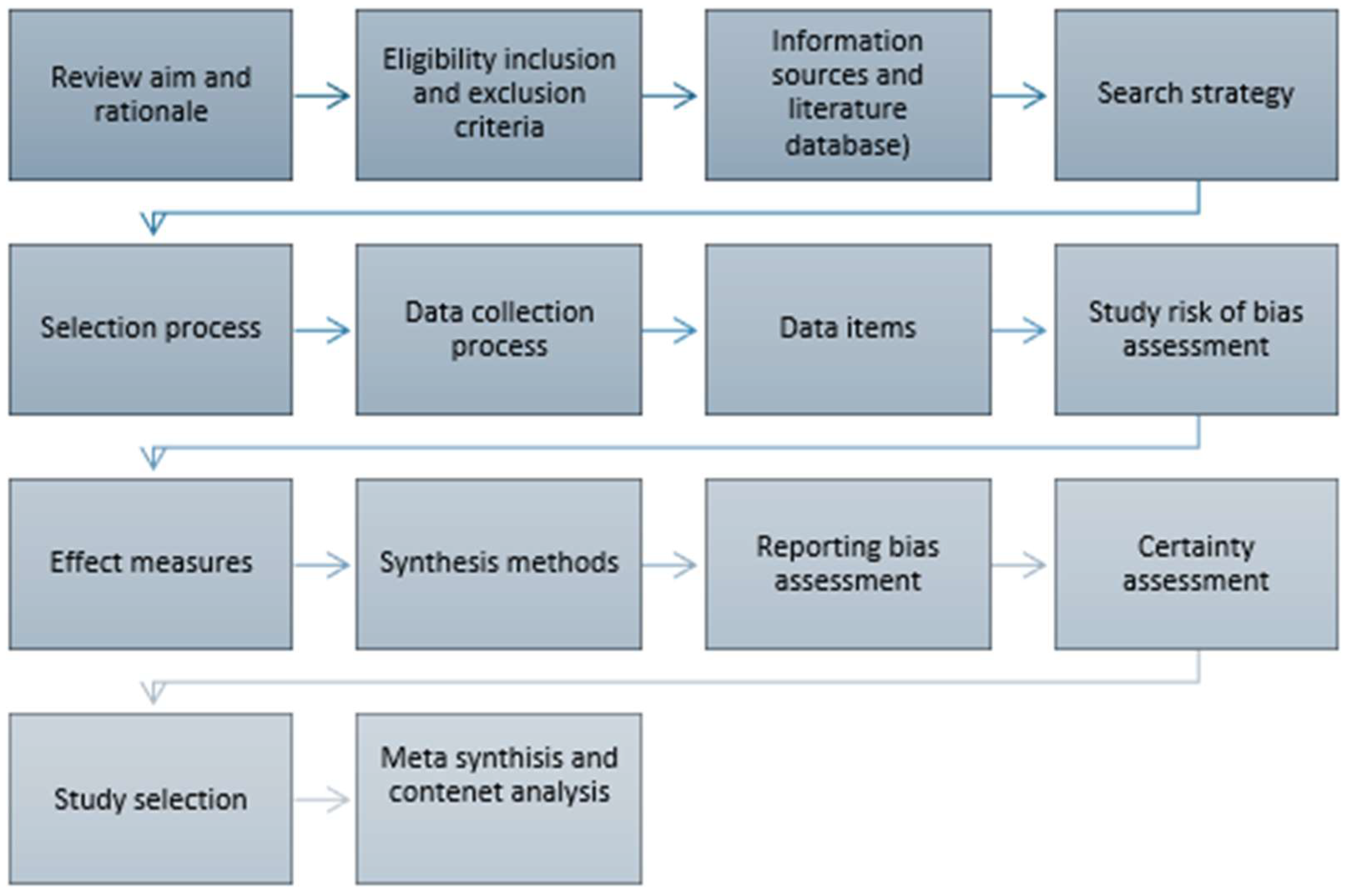
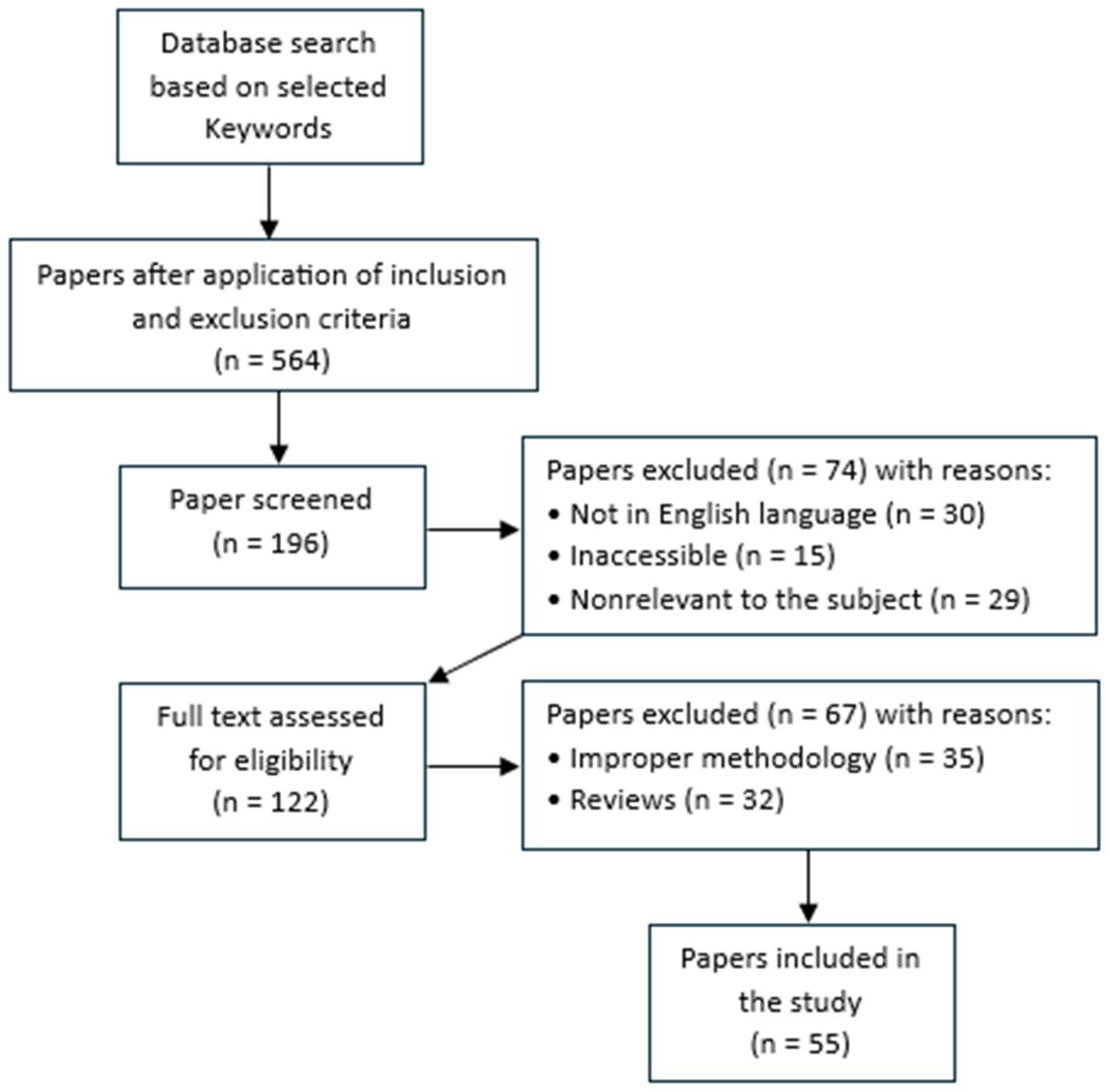

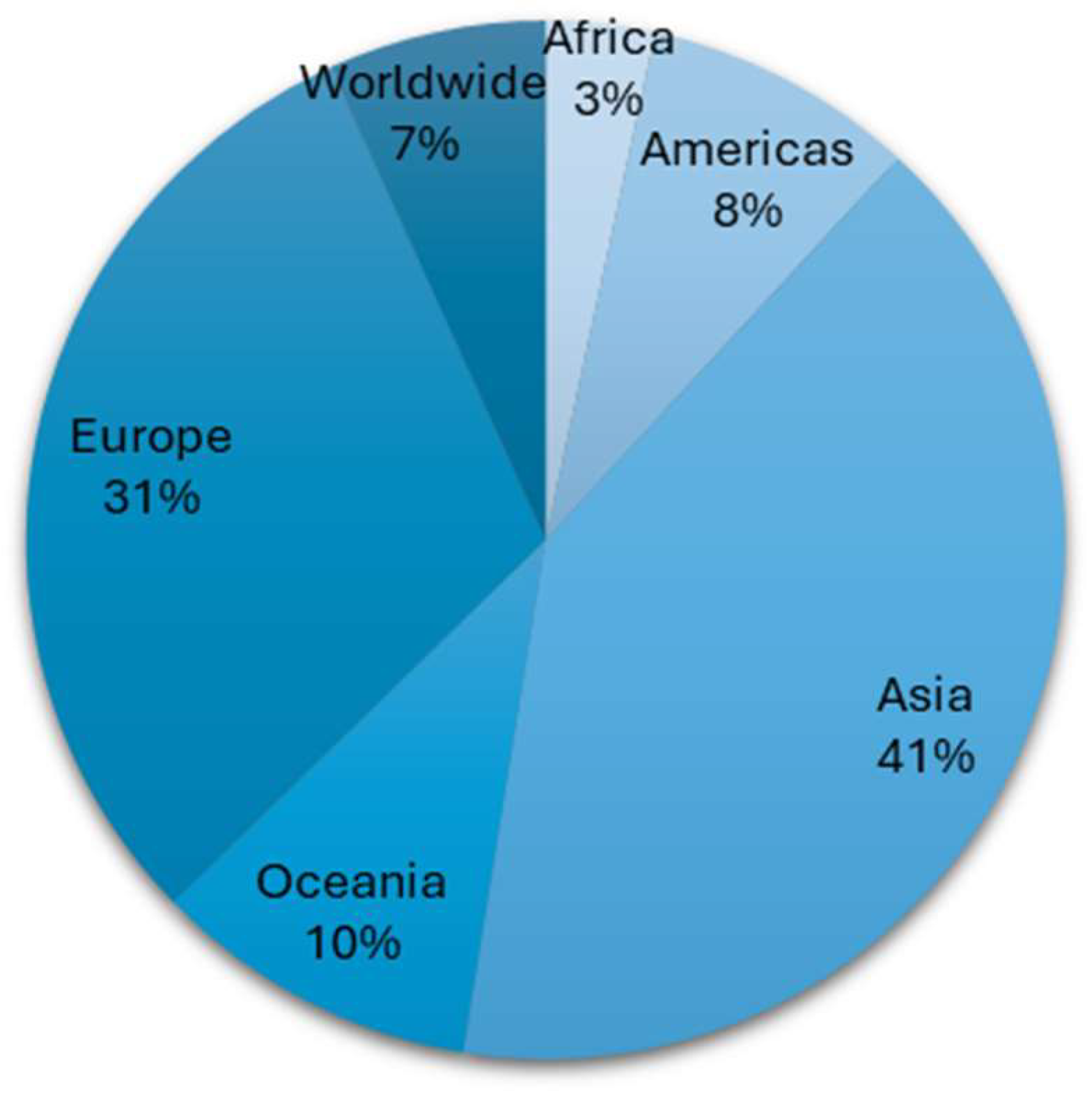
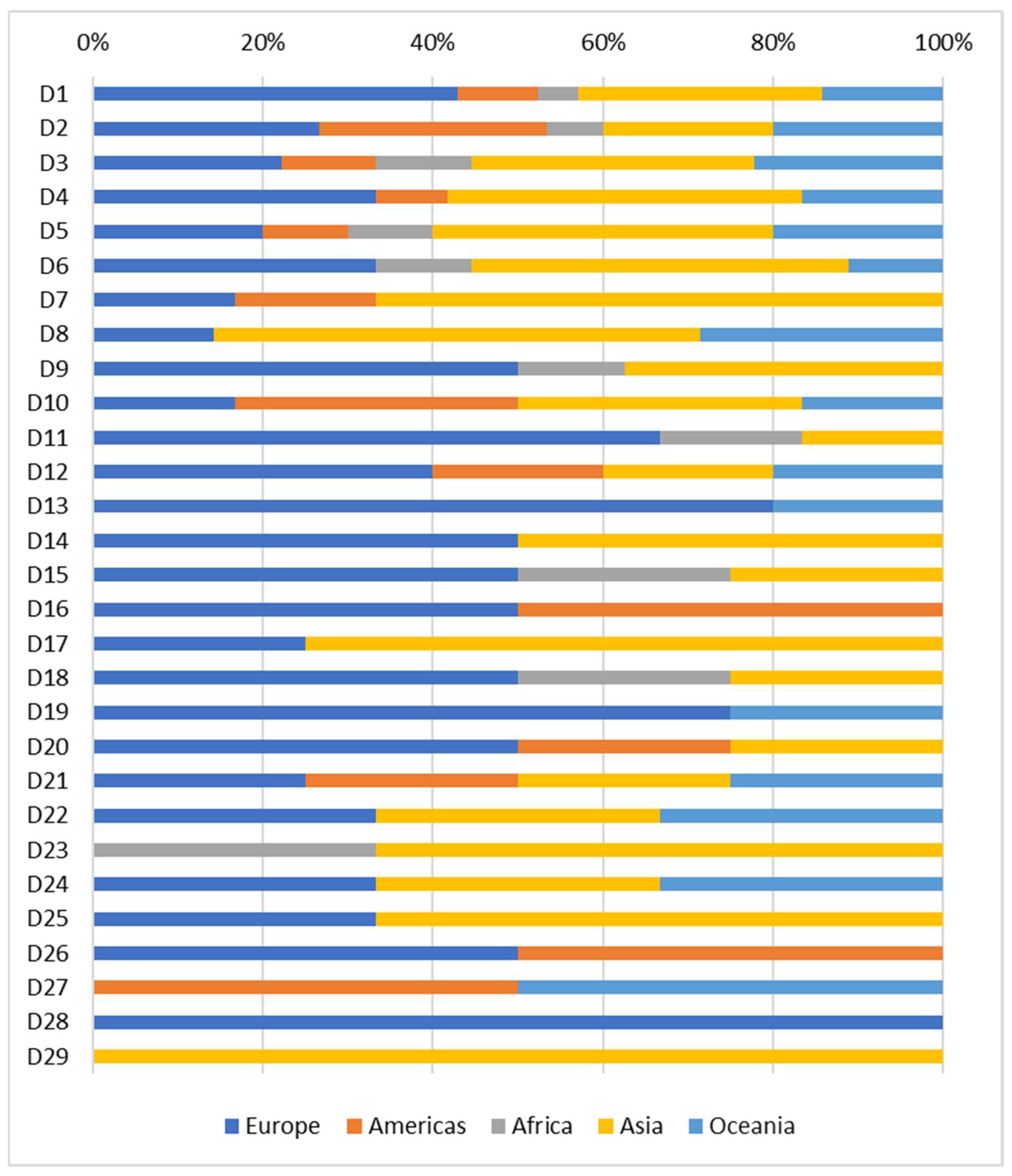
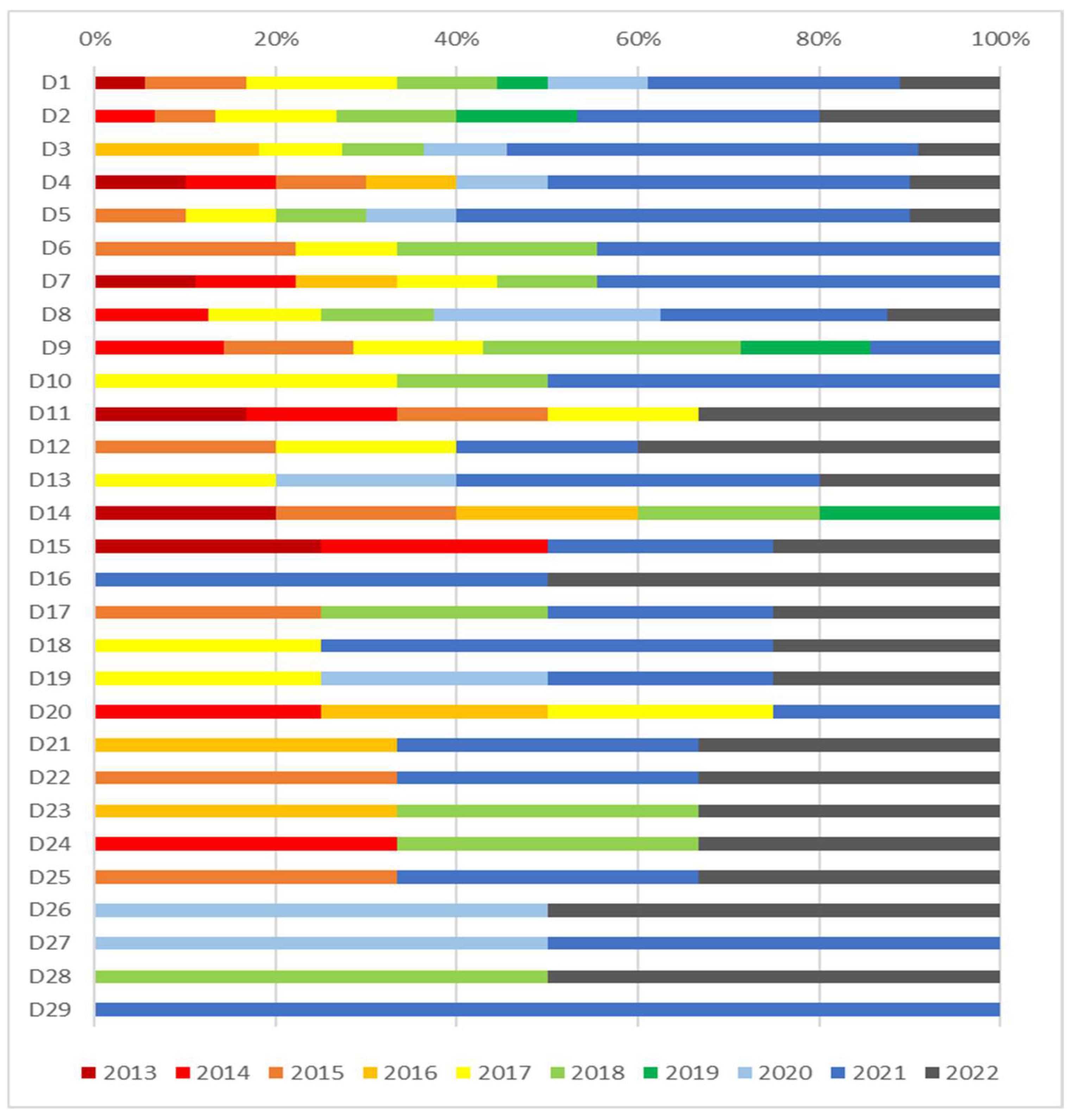
| Code | Drivers | Article ID | PESTLE Category | Frequency | Rank |
|---|---|---|---|---|---|
| D1 | Adequate formulation and application of governmental CDW regulations and policies | [32,35,36,37,38,39,40,41,42,43,44,45,46,47,48,49,50,51] | Political/legal | 18 | 1 |
| D2 | Training and education about CDW management aspects (causes, types, LWTs, cost savings, environmental impact) | [19,30,31,32,36,39,40,42,46,49,52,53,54,55,56] | Social | 15 | 2 |
| D3 | Provision of innovative low-waste technologies (LWTs) | [29,36,39,42,51,52,54,57,58,59,60] | Technological | 11 | 3 |
| D4 | Adequate formulation and application of CDW protocols, programmes, and strategies | [32,39,48,53,59,60,61,62,63,64] | Political/legal | 10 | 4 |
| D5 | Commitment of client and contractor by allocating time and money for CDW management | [36,37,39,40,42,43,51,54,65,66] | Economic | 10 | 4 |
| D6 | Attitude and behaviour towards CDW management | [35,36,41,42,49,63,65,67,68] | Social | 9 | 6 |
| D7 | Data availability about CDW management | [32,37,57,60,62,65,69,70,71] | Technological | 9 | 6 |
| D8 | Adequate and efficient CDW recycling infrastructure | [19,37,42,53,63,65,72,73] | Technological | 8 | 8 |
| D9 | CDW landfilling volume restrictions and increased fees | [19,36,44,50,53,68,74] | Political/legal Economic | 7 | 9 |
| D10 | Mature market for reused and recycled CDW | [19,30,31,32,42,52] | Social Economic | 6 | 10 |
| D11 | Mandatory requirement for site waste management plans (SWMPs) | [45,66,70,75,76,77] | Political/legal | 6 | 10 |
| D12 | Cooperation and integration between stakeholders in value chain | [31,56,68,77,78] | Social | 5 | 12 |
| D13 | Governmental funding and financial support | [35,38,42,50,56] | Economic Political/legal | 5 | 12 |
| D14 | Use of waste prediction tools | [66,71,79,80,81] | Technological | 5 | 12 |
| D15 | Adoption of offsite construction | [43,45,53,76] | Technological | 4 | 15 |
| D16 | Adoption of waste traceability system | [29,47,55,60] | Technological | 4 | 15 |
| D17 | Standardisation of design | [19,59,66,77] | Technological | 4 | 15 |
| D18 | Development of environmental standards for design, construction, and demolition activities | [35,50,59,76] | Political/legal Environmental | 4 | 15 |
| D19 | Municipality acting as facilitator | [38,42,50,56] | Political/legal | 4 | 15 |
| D20 | Establishing business module for CWM practices | [29,52,53,82] | Economic Technological | 4 | 15 |
| D21 | Communication and collaboration platforms for development/implementation of circular economy value chains | [29,56,61] | Technological | 3 | 21 |
| D22 | Incentivising project teams by offering benefits and awards | [39,54,66] | Economic | 3 | 21 |
| D23 | Skills and experience in construction | [36,77,83] | Social | 3 | 21 |
| D24 | R&D in circular economy | [39,41,53] | Technological | 3 | 21 |
| D25 | Efficient procurement system | [66,74,77] | Economic Technological | 3 | 21 |
| D26 | Pressure from environmental organisations/activists | [38,40] | Environmental | 2 | 26 |
| D27 | Availability of waste-sharing platforms | [29,73] | Technological | 2 | 26 |
| D28 | Mandatory requirement for selective demolition | [56,84] | Political/legal | 2 | 26 |
| D29 | Development of integrated environmental and economic management model | [59] | Environmental Economic | 1 | 29 |
| TOTAL | 200 | ||||
Disclaimer/Publisher’s Note: The statements, opinions and data contained in all publications are solely those of the individual author(s) and contributor(s) and not of MDPI and/or the editor(s). MDPI and/or the editor(s) disclaim responsibility for any injury to people or property resulting from any ideas, methods, instructions or products referred to in the content. |
© 2024 by the authors. Licensee MDPI, Basel, Switzerland. This article is an open access article distributed under the terms and conditions of the Creative Commons Attribution (CC BY) license (https://creativecommons.org/licenses/by/4.0/).
Share and Cite
Alhawamdeh, M.; Ferriz-Papi, J.A.; Lee, A. Examining the Drivers to Support Improved Construction and Demolition Waste Management for a Circular Economy: A Comprehensive Review Using a Systematic Approach. Sustainability 2024, 16, 6014. https://doi.org/10.3390/su16146014
Alhawamdeh M, Ferriz-Papi JA, Lee A. Examining the Drivers to Support Improved Construction and Demolition Waste Management for a Circular Economy: A Comprehensive Review Using a Systematic Approach. Sustainability. 2024; 16(14):6014. https://doi.org/10.3390/su16146014
Chicago/Turabian StyleAlhawamdeh, Mahmoud, Juan A. Ferriz-Papi, and Angela Lee. 2024. "Examining the Drivers to Support Improved Construction and Demolition Waste Management for a Circular Economy: A Comprehensive Review Using a Systematic Approach" Sustainability 16, no. 14: 6014. https://doi.org/10.3390/su16146014






